In the year 26 AD Emperor Tiberius gave a nightly banquet in one of his favorite places, a cavern by the sea decorated with the most exquisite sculptures by the best artists of the day. It was all laughter and revelry until the night took a turn for the worse. Large blocks of stone began to fall from the ceiling of the cave and the guests fled in terror. Those who could.
The emperor's life was saved thanks to Sejanus, the praetorian prefect to whom Tiberius would end up delegating a good part of the power after his definitive retirement to Capri, just after the incident in the cave.
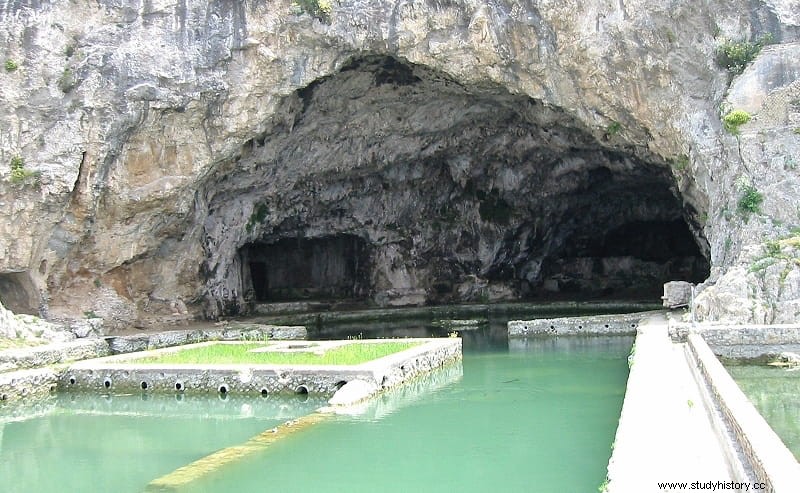
The place in question is located in the current town of Sperlonga, on the coast halfway between Rome and Naples. There Tiberius built a large villa with several buildings arranged on terraces facing the sea, which included the grotto (in Latin speluncae ) that ended up giving the modern city its name.
In the grotto he installed a triclinium, that is, a dining room adorned with impressive statues representing scenes from the Odyssey and aquatic elements, in which he used to organize banquets and treats. But he left the place after the incident and moved to Capri. He would never come back. Over time the location of the grotto and the villa, mentioned by ancient sources, was forgotten.
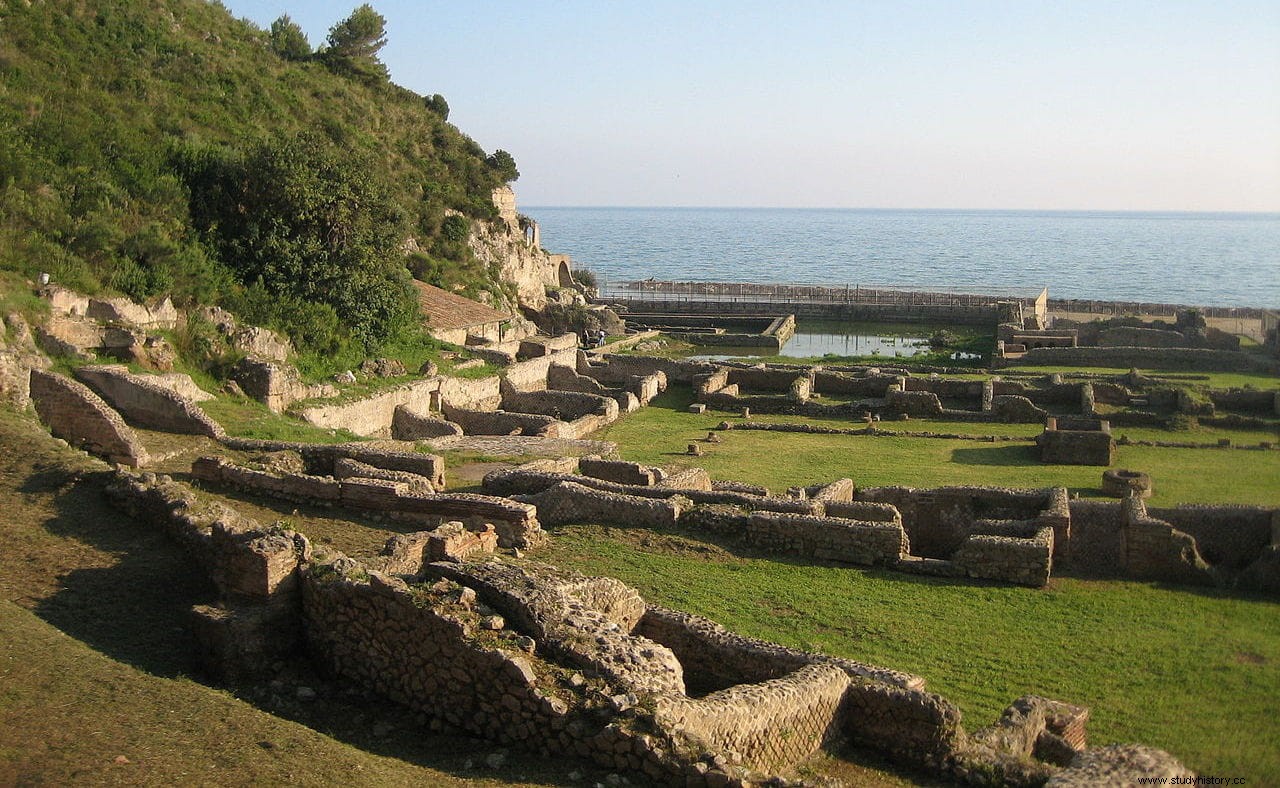
Until in 1957 an engineer named Bellanti who was directing the construction of the coastal road between Terracina and Gaeta noticed that there were some ancient-looking walls next to a grotto near the sea. He notified the authorities, but they did not pay much attention to him.
So he started the excavations in the villa and the grotto on his own account. This is how he brought to light the large rectangular pool that was at the entrance, which was filled with sea water, and inside which there was a small artificial island that housed the cenatio (the dining room) summer. The pool communicated with another circular interior of 12 meters in diameter.
On both sides of the main cavity he found two other rooms, one in the shape of a horseshoe on the left, with a triclinium at the end, and on the right a nymphaeum with small waterfalls and water features.
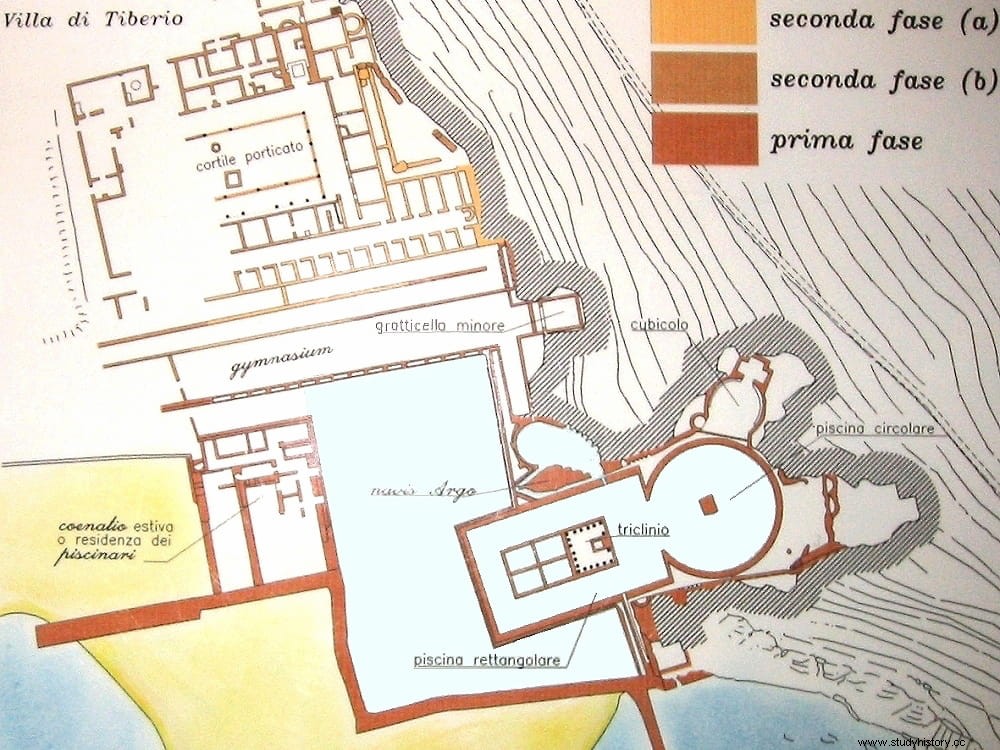
In all these rooms the engineer unearthed fragments of the sculptures that decorated them in the time of Tiberius. So many that it was possible to carry out reconstructions of all the sculptural groups and to preserve them, the National Archaeological Museum of Sperlonga was created in 1963 next to the ruins of the emperor's villa.
Possibly the sculptures were broken during the collapse that surprised Tiberius inside, and that would explain why pieces are missing from the reconstructions, since they would have been pulverized under the rocks.
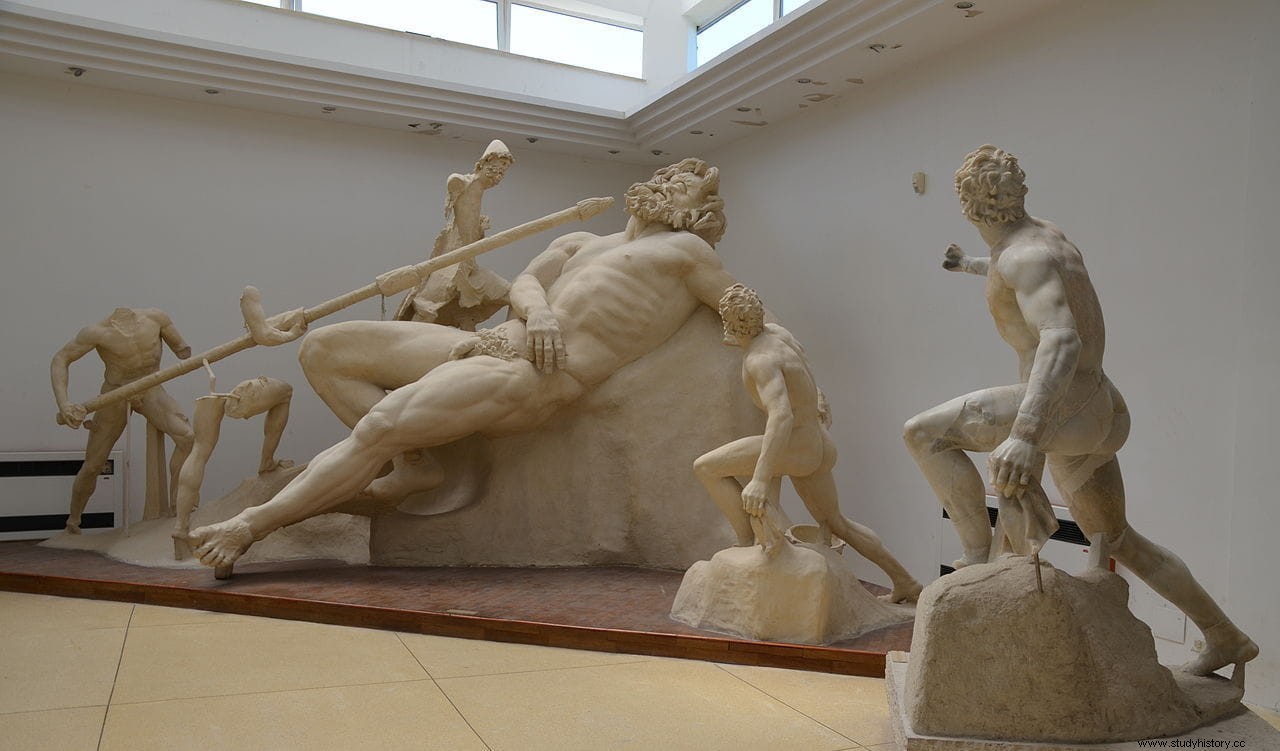
At the bottom of the cave was the group representing Odysseus and his companions blinding the Cyclops Polyphemus. On the islet in the middle of the entrance pool was the representation of Scylla's attack on Odysseus' ship, and on both sides of the entrance to the grotto were two scenes from the Trojan War:Odysseus carrying the body of Achilles, and Diomedes and Odysseus stealing the Palladium, the sacred statue of the Trojan city that represented Athena.
At the top of the cave entrance, another group of sculptures represented the abduction of Ganymede. Today a replica can be seen placed in the original position.
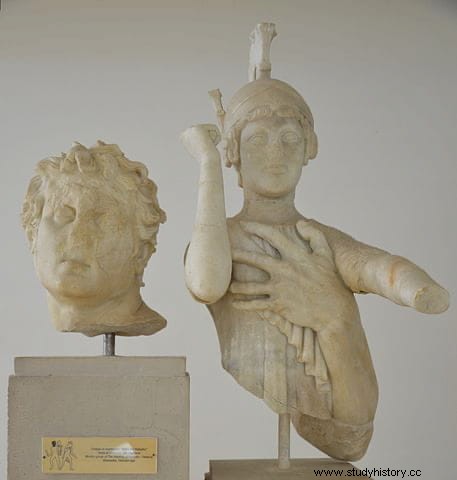
The Polyphemus group is of colossal dimensions and was reconstructed using an iconographic source to recreate the compositional aspect and identify the spatial location of the individual figures in it:a fragment of a Roman sarcophagus from the 3rd century AD was used. with an identical theme, which can currently be seen in the Museum of Castello Ursino in Catania.
Like the rest of the sculptures, plaster was used for the reconstruction to replace the missing parts, in what some specialists such as Mary Beard have described as creative reinventions .
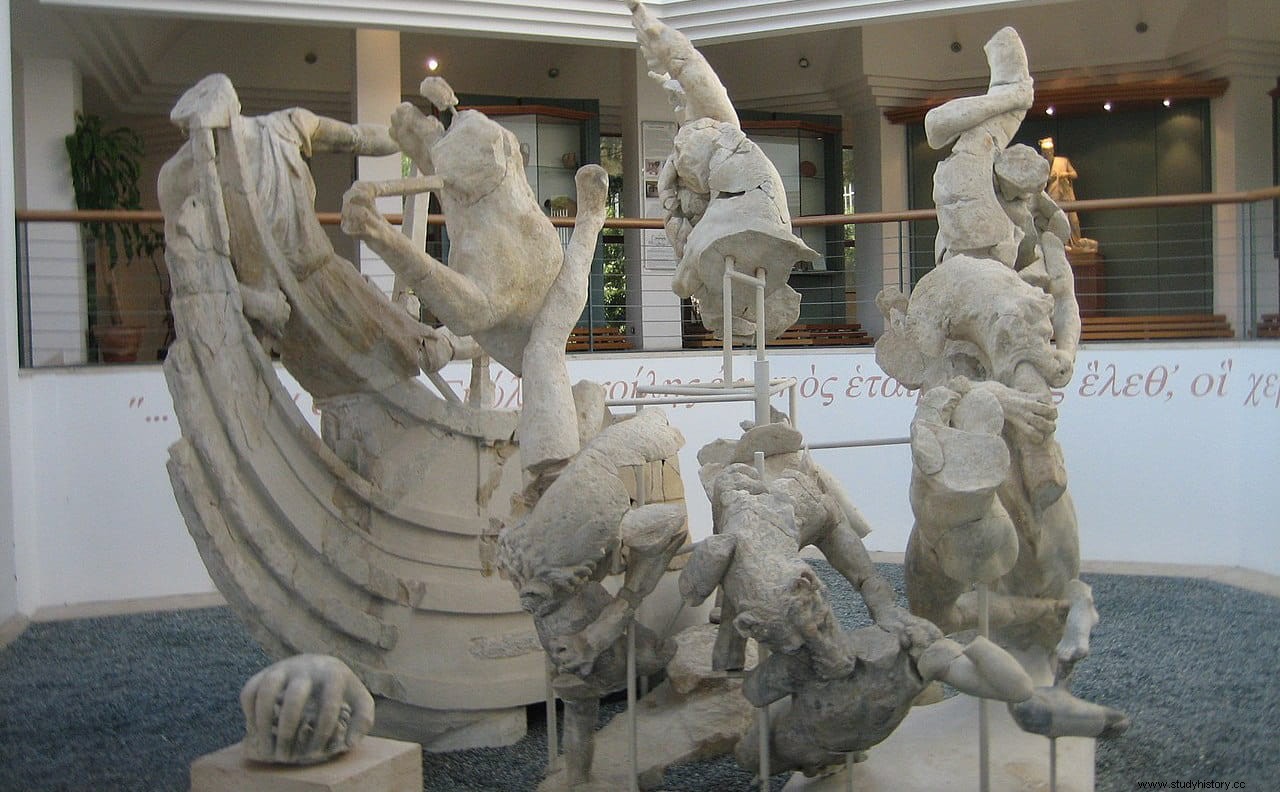
All the sculptures were designed to be viewed from the central triclinium, and the researchers assume they were artificially lit, especially at night, as the rear of the grotto is quite dark even during the day.
The cavity was also decorated with stalactites and artificial inlays, as well as a colorful mosaic floor made using the opus sectile technique. .
An inscription on the ship of the Scylla group names the sculptors responsible for the ensemble:Athenodorus, Agesander, and Polydorus. Curiously, the same three names of sculptors of the Rhodian school that Pliny the Elder gives as the authors of the famous Hellenistic sculpture of Laocoön and his sons. However, experts are not convinced that they are the same.
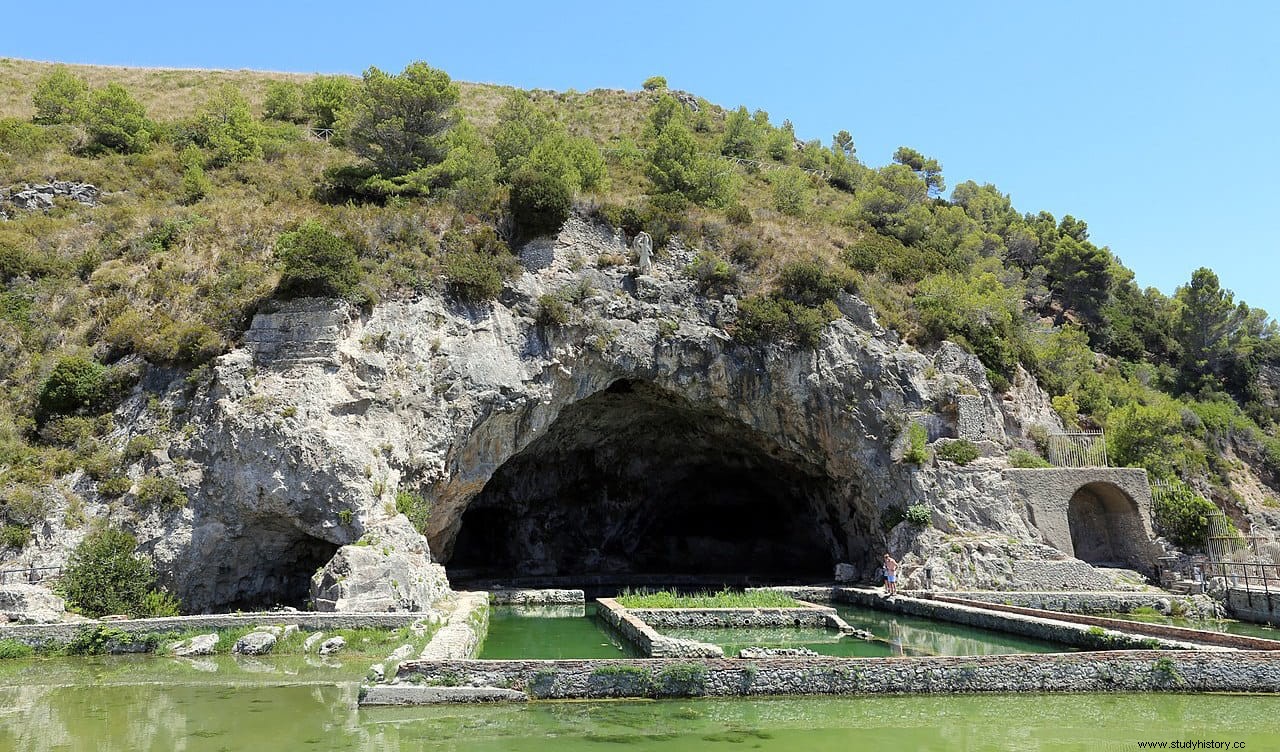
And it is that the sculptures of Sperlonga and the Laocoon are of a similar style, but they have some significant differences. They are uneven, but inferior in skill and finish. Although it is also true that the set is considerably larger and would have required many teachers' assistants.
For this reason some consider them to be Roman copies of earlier Hellenistic works. Others believe that they were created specifically at the request of Tiberius, as reproductions of earlier groups in bronze, and even as versions or adaptations of Hellenistic groups with a similar theme.
This last hypothesis would reflect the legendary ancestry claimed by the gens Claudia, to which Tiberius belonged, who claimed to be a descendant of Odysseus. In addition, during the time he had spent in exile in Rhodes he could have known the workshop and the sculptors who would later carry out the commission according to his particular tastes.
